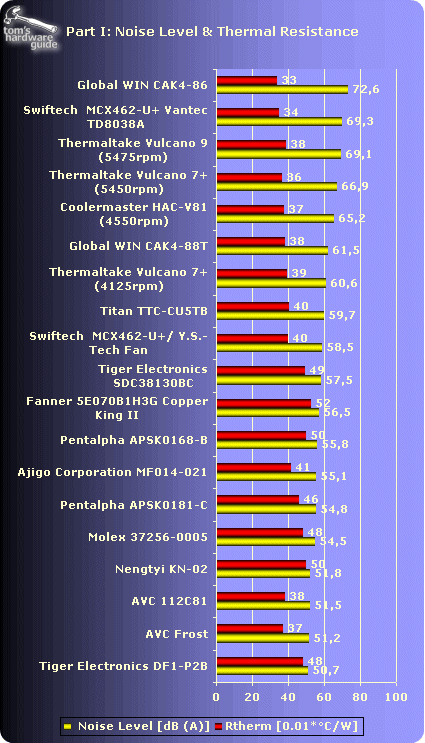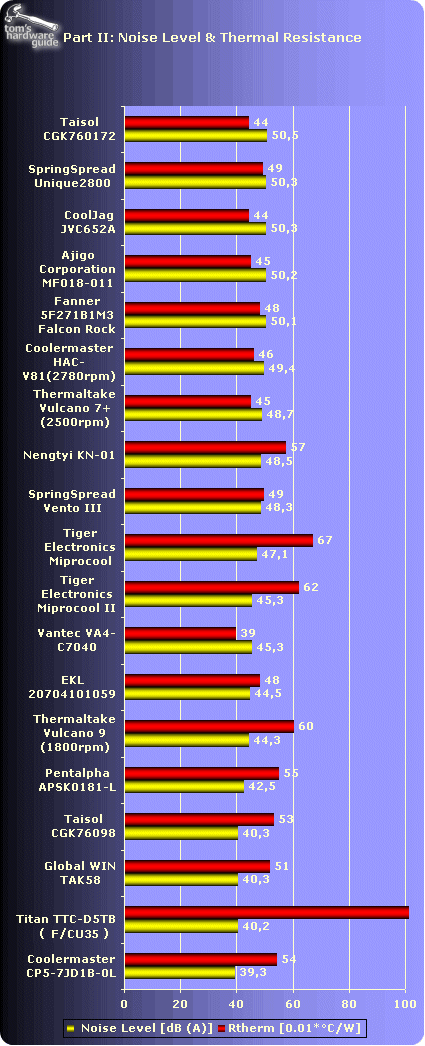A Comparison of 34 Coolers for the AMD Athlon XP
Noisy Or Quiet: From 38 To 73 DB(A)
The noise level of the tested fans varies according to the model, from an extremely quiet, barely audible 38 dB(A) (which can be compared to a loud whisper) up to an annoying 67 dB(A) (loud talking).
To compare the noise of the fans, you should go by the following rules of thumb: twice the volume is equivalent to an increase in the noise level of 10 dB(A); four times the volume is therefore equivalent to an increase in the noise level of 20 dB(A); differences of 1 dB are virtually inaudible, while differences of 3 dB(A) are clearly noticeable.
Please note that the measurements were taken at a constant ambient noise level of 34dB(A) with the housing opened, at a distance of approximately 35 centimeters from the fan wheel. Consequently, the levels will be considerably lower than our results when the housing is in place.
Hot Or Cold: Thermal Resistance Is Decisive
The thermal resistance is the decisive value in this test. It is the measure for the cooler's performance capacity . It is calculated from the processor's power loss ratings PV , the die temperature TD and the surrounding temperature TA , according to the following formula:
Rtherm =(TD -TA )/PV in °C/W
The die temperature is an operand only. Its value during the test is influenced to a great extent by the CPU's power loss rating and can vary greatly, even with similarly rated clock speeds. "Our" Athlon-XP 2400+ scored a maximum power loss of 57 Watts. According to the data sheet, however, the Athlon-XP 2400+ can devour up to 68 Watts. If you were to operate these two 2400+-CPUs using the same cooler, with a thermal resistance of, say, 0.5°C/W, the die temperature of the THG 2400+-CPU would be around 5.5°C cooler.
Get Tom's Hardware's best news and in-depth reviews, straight to your inbox.
Current page: Noisy Or Quiet: From 38 To 73 DB(A)
Prev Page Heavy But Zippy: Dragonfly-P2B Next Page Technical Data: 34 Coolers In Comparison
